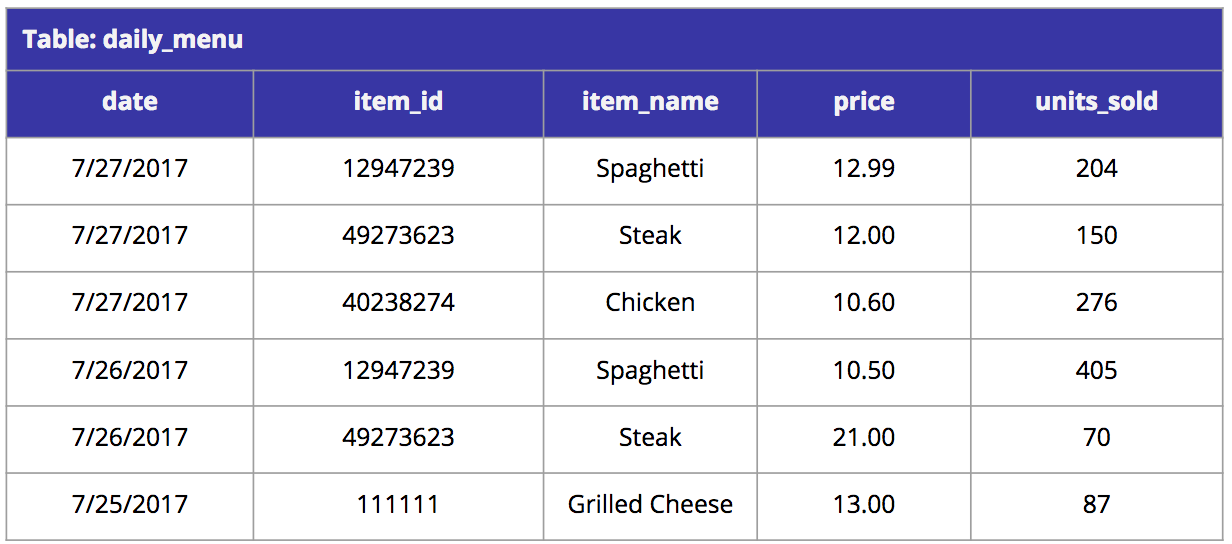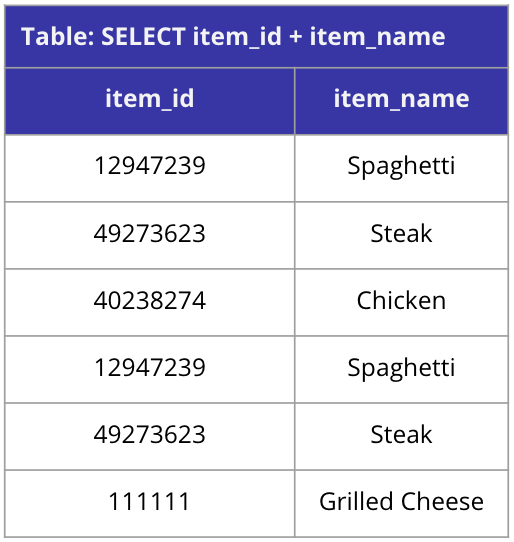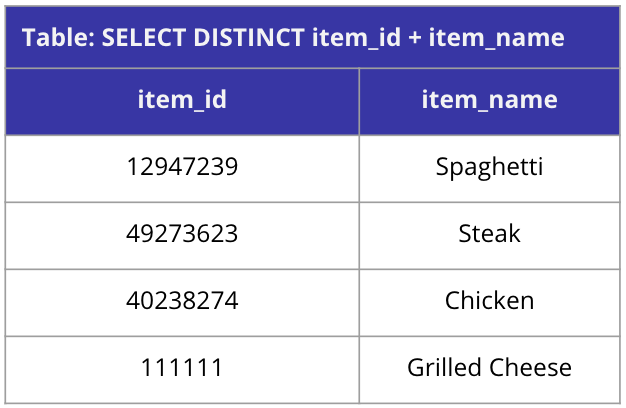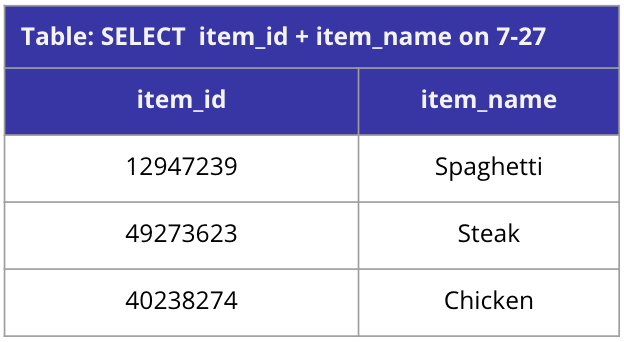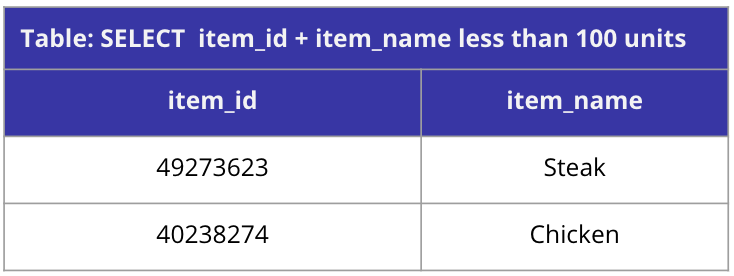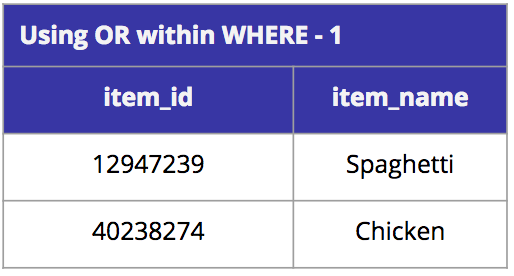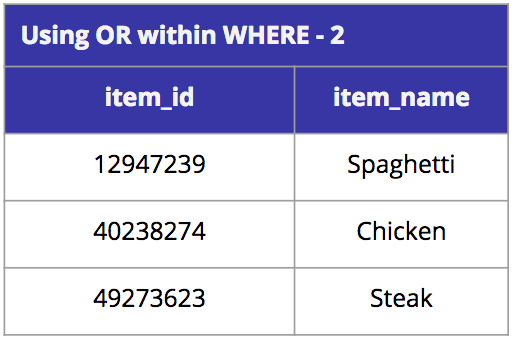SQL 101 - SELECT, FROM, WHERE Clauses
Learn SQL fundamentals focusing on SELECT, FROM, and WHERE clauses to pull and filter data from database tables.
The goal of this post is to introduce you to SQL and take you through the minimum requirements of building a SQL query to pull data. We'll be coming out with SQL 201 soon, which will cover more advanced topics.
What is SQL and how can I use it?
SQL stands for Structured Query Language. SQL lets you access and manipulate data within databases. Not only can you pull data with SQL, you can also do most modifying actions to a database including, inserting, deleting, updating records.
Database tables
A database typically contains one or more tables, each can be uniquely identified by a table name. Below is an example table that we’ll be using to practice our SQL skills. The table below has the daily menu at a restaurant.
A basic SQL query
The query below is the most basic SQL query you can write to select data from a table.
SELECT *
FROM daily_menu;
The SELECT statement indicates that you’d like to select data. The “*” operator indicates all, meaning that you want to select all columns from the table. FROM indicates where you want to select this data from.
SELECT statement
Within the “A basic SQL query” section above, you’ve learned that “*” operator allows you to select all of the columns from a given table. What if you only want to select 1-2 columns? You can specify that within the SELECT clause. See the example below, we’re only going to select all menu item names and their id’s within the daily_menu table.
SELECT item_name, item_id
FROM daily_menu;
Note that within the SELECT statement we can also do data aggregations (e.g. sum, if clauses, windowing functions), we don’t just need to select unmanipulated columns.
SELECT DISTINCT statement
As you can see from above, when we select item_name and item_id we get duplicate records. If we want to remove the duplicate records we can use the DISTINCT statement to remove duplicates.
SELECT DISTINCT item_name, item_id
FROM daily_menu;
Note that within the SELECT statement we can also do data aggregations (e.g. sum, if clauses, windowing functions), we don’t just need to select unmanipulated columns.
WHERE Clause
Now what if we wanted to select only items and their id’s that were served on a particular day? We can use the WHERE clause to do this! The WHERE clause is used to extract only records that fulfill a specified condition. Let's say we only want to select the items and their id’s if they were served on “2017-07-27” (comparing two strings, assuming date is string data type). We can do that with the query below.
SELECT item_name, item_id
FROM daily_menu
WHERE date = ‘2017-07-27’
We can also do numeric comparisons with a where clause. Let’s return item_id’s and item_name’s where unit sold is less than 100.
SELECT item_name, item_id
FROM daily_menu
WHERE units_sold
WHERE Clause Operators
There are a few operators we can use within the WHERE clause. The below chart outlines all of the operators you can use to compare values.
| Operator | Description | Example |
|---|---|---|
| = | Equal | WHERE units_sold or != |
| > | Greater than | WHERE units_sold > 100 |
| = | Greater than or equal to | WHERE units_sold >= 100 |
SELECT item_name, item_id
FROM daily_menu
WHERE date = ‘2017-07-27’
AND units_sold > 200
We will select all item_name’s and item_id’s that were sold on 2017-07-27 OR has a price over $20.00.
SELECT item_name, item_id
FROM daily_menu
WHERE date = ‘2017-07-27’
OR price > 20.00
Conclusion
Hopefully now you feel confident in pulling simple data requests from a table. If you want more content like this, visit SQL 201 for a deeper dive into SQL commands.

